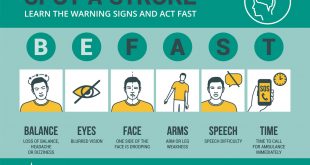

Nearly 24 Million Americans have COPD. Most of them are over the age of 40 and have a history of smoking or being subjected to respiratory irritants such as chemicals and pollutants.
COPD is a disease that is encompassed by chronic bronchitis, emphysema, and asthma, causing shortness of breath, productive coughing and inflammation of the airways. It is a progressive lung disease with no cure. Most patients are put on steroids (oral and inhaled), bronchodilators and antibiotics.
Individuals with COPD often have incidents of fluid build-up, which can make it difficult for them to breath. They frequently feel as if they are drowning and call 911 often due to this terrifying sensation. This is why it’s important to speak to your physician about your COPD treatment and the best at home care techniques to keep you safe and comfortable.
How Asthma Affects the Lungs
According to the Asthma and Allergy Foundation of America, 26 million people have asthma, and allergic asthma is the most common type affecting 60% of sufferers. Allergic asthma has the same symptoms as asthma but is the result of what the body is having an allergic reaction to, which causes bronchial inflammation. Allergies can trigger the body’s immune response through skin absorption and contact, inhalation, ingestion, infusions or injections.
When a substance enters the body like dust mites (a common allergen), the antibodies, which are proteins bind to the allergen to defend itself. This causes an immunoglobin E (IgE) release. The E stands for Eosinophils. If too much IgE is in the body, it will produce allergic reactions like hives, itching eyes, nasal congestion, vomiting, a swollen mouth or anaphylaxis to name a few. It can also trigger asthma, which is a narrowing of the bronchial system and inflammation of the lungs, which makes it difficult to breathe. Too many eosinophils will trigger a white blood cell response and cause asthmatic wheezing, shortness of breath, coughing and in severe cases, the inability to breathe.
To control allergic asthma, the doctor must determine precisely what the allergens are, and treat those, along with managing the patient’s asthma. A blood test can be given to determine how many eosinophils are in the blood and their trigger. Once this is established, to control allergic asthma, certain biologics.
Lung Cancer
The second leading cancer in both men and women is LUNG CANCER. According to the American Cancer Society’s Statistics, there will be 228,150 new cases of lung cancer diagnosed and 142,670 deaths from lung cancer this year alone. Despite these grim statistics, nearly 430,000 people today, have at some point in their lives been diagnosed with lung cancer, and yet they are alive and well with zero remission. This is predominantly because it was caught early through lung cancer screenings.
Bradenton Research Center
Pharmaceutical companies are consistently researching new promising medications and treatment options to slow the progression of diseases and conditions and to find a cure. By participating in studies, you help to advance research and the availability of new drugs to other patients in need, like you.
Bradenton Research Center offers numerous medical studies focused on new medications.
For over 25 years, Bradenton Research has provided clinical research trials for patients and their families for a wide variety of medical conditions. Patients enrolled in our studies are closely monitored by our research physicians and coordinators. All study-related care and medication is provided to our patients at no cost.
To find out more or to participate in a study, please contact Bradenton Research Center today at (941) 708-0005.
 Southwest Florida's Health and Wellness Magazine Health and Wellness Articles
Southwest Florida's Health and Wellness Magazine Health and Wellness Articles

